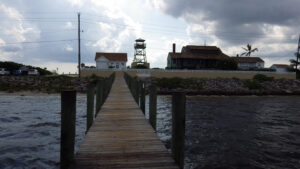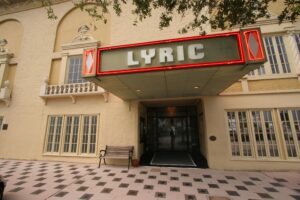
House of Refuge
Step back in time to the turn of the century with a visit to the House of Refuge Museum at Gilbert’s Bar. The House of Refuge at Gilbert’s Bar is the only remaining House of Refuge. Built as one of ten along the east coast of Florida, it is the oldest structure in Martin County and is listed on the National Register of Historic Places.

Martin County, Florida, Parks Mansion with Photography by Randy Smith
Mansion at Tuckahoe
In 1936, Atlanta businessman Willaford Leach and his wife Anne Bates Leach, a Coca Cola heiress, built the Mediterranean Revival home that exists today. Named “Tuckahoe” (thought to be a Native American term for “Welcome”), the estate was completed in 1939 with the latest in architectural design for that time. Sitting on approximately 54 acres of riverfront woodland and rolling lawns, Tuckahoe was the hub of social life in Martin County and the setting for countless parties attended by the local social set and WWII soldiers from Camp Murphy. Mrs. Leach, who helped to start The Garden Club, also donated the funds necessary to build the original building for the well-known Bascomb Palmer Eye Institute in Miami.
 Captain Henry Sewall’s House
Captain Henry Sewall’s House
This historic structure, built in 1889 at the tip of the peninsula that became Sewall’s Point, was once the home of local pioneer and developer Henry E. Sewall. When Capt. Sewall became the postmaster, he established the Sewall’s Point post office in his home in 1891. Capt. Sewall and his wife Abbie lived in the house until 1910. It was then moved to Willoughby Creek in Port Sewall where it stood 90 years.
 The New Monrovia One-Room Schoolhouse
The New Monrovia One-Room Schoolhouse
The New Monrovia One-Room Schoolhouse is located adjacent to the Costella Williams Learning Center at 4455 SE Murray Street in New Monrovia Park. Constructed circa 1930, the 25 x 30 foot wood-frame building is a vital part of Martin County’s history. It was one of the first schools built in Martin County to educate African-American children.
 The Lyric Theatre
The Lyric Theatre
The Lyric Theatre was built in 1926 as a silent movie house and was operated until the depression when it was closed and eventually sold. Over the next 50 years, it was bought and sold to various concerns and used in a variety of manners. In 1978 the theatre was purchased by a non-denominational church and was used for their weekly services until they built a new facility, and no longer needed the structure in downtown Stuart. At that time, in 1987, a downtown redevelopment effort was underway. A group of community-minded individuals, FRIENDS OF THE LYRIC, INC., saw THE LYRIC THEATRE, situated in the heart of downtown, and realized there was an opportunity to save a historically significant structure. With assistance from community grassroots efforts and grants, The Lyric underwent much-needed repair to stabilize the building.

Martin County Reef Program
Georges Valentine
One of Florida’s only 12 Underwater Archaeological Preserves is located in Martin County! The Georges Valentine is located 100 yards south of Gilbert’s House of Refuge in Stuart and was Florida’s eleventh Archaeological Preserve. This site is also on the National Register of Historic Places.
The 12 Underwater Archaeological Preserves in Florida, scattered from the northwestern Panhandle down to the Florida Keys. These sites contain not only interesting archaeological features, but also an abundance of marine life that make the parks living museums in the sea. Each site is interpreted by an underwater plaque.
 Stuart Heritage Museum
Stuart Heritage Museum
The building operated as Stuart Feed Store until the late 1980s when the City of Stuart purchased the building and land which extends from Flagler Avenue east to the St. Lucie River. Since August 1992, Stuart Heritage, Inc. has operated the Stuart Heritage Museum in the building. During 2011, the building marked its 110th birthday, the oldest commercial building in Stuart. In 2012 the Stuart Heritage Museum will celebrate its 20th anniversary.
Native American Heritage
The Trail of Florida’s Indian Heritage includes more than 100 destinations including Martin County, with three officially designated areas. They provide and curate the popular “Florida Native American Heritage Trail” and provide visitors with information on ways to experience the rich history and modern culture of Florida’s native people. The website and official map provides an account of the 12,000-plus years of Native American presence and significance in Florida and includes special interest topics and biographies of individuals important to Florida’s Native American heritage are presented throughout the publication.
 Jonathan Dickinson State Park
Jonathan Dickinson State Park
Jonathan Dickinson State Park is named after a Quaker merchant by the name of Jonathan Dickinson who was shipwrecked off the coast 1696. During World War II, the land was home to Camp Murphy, an army base for Southern Signal Corps School. The barracks are still visible.






